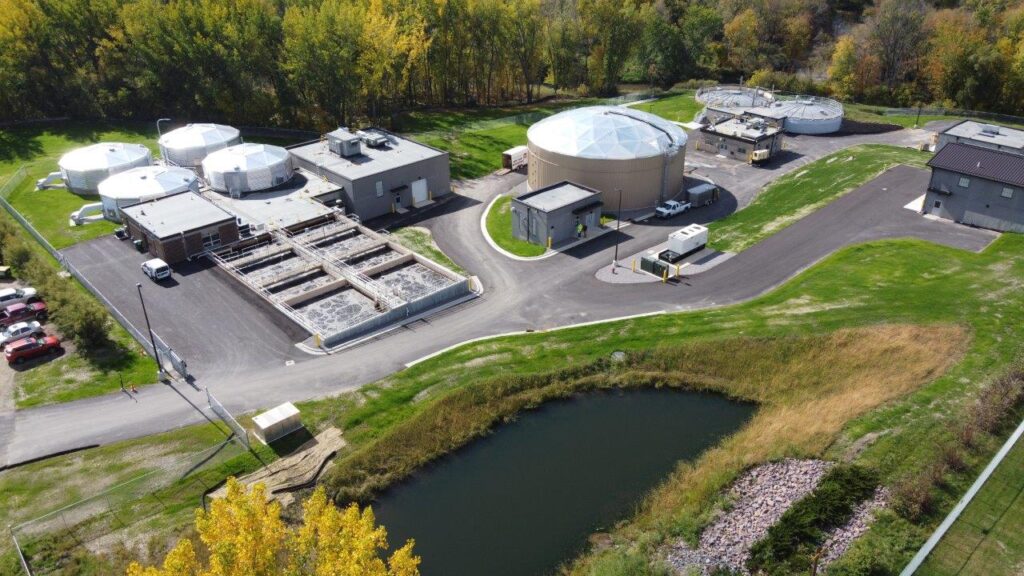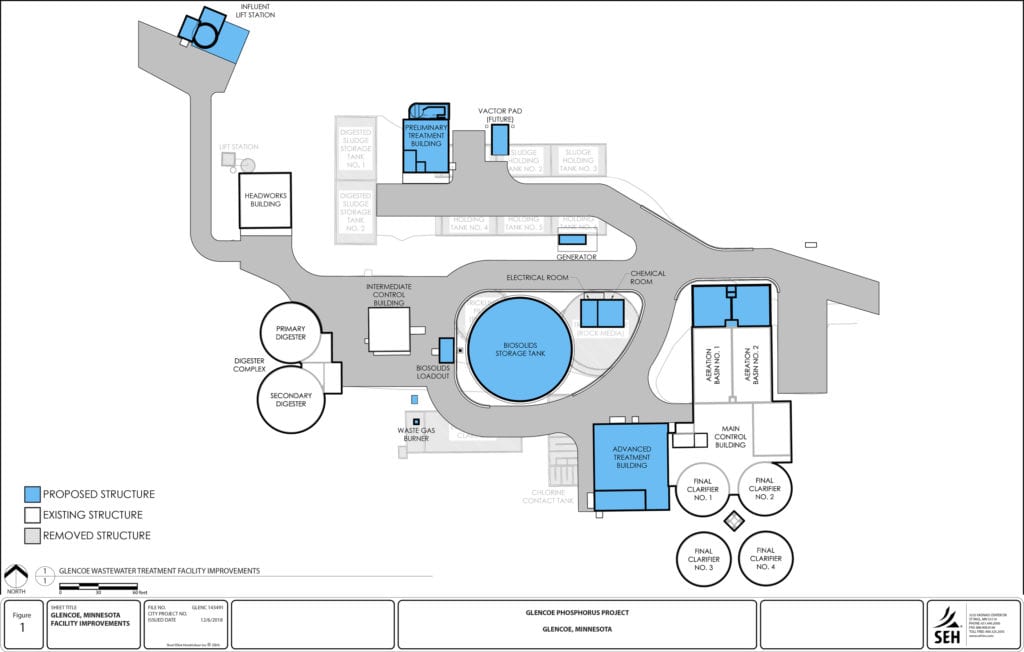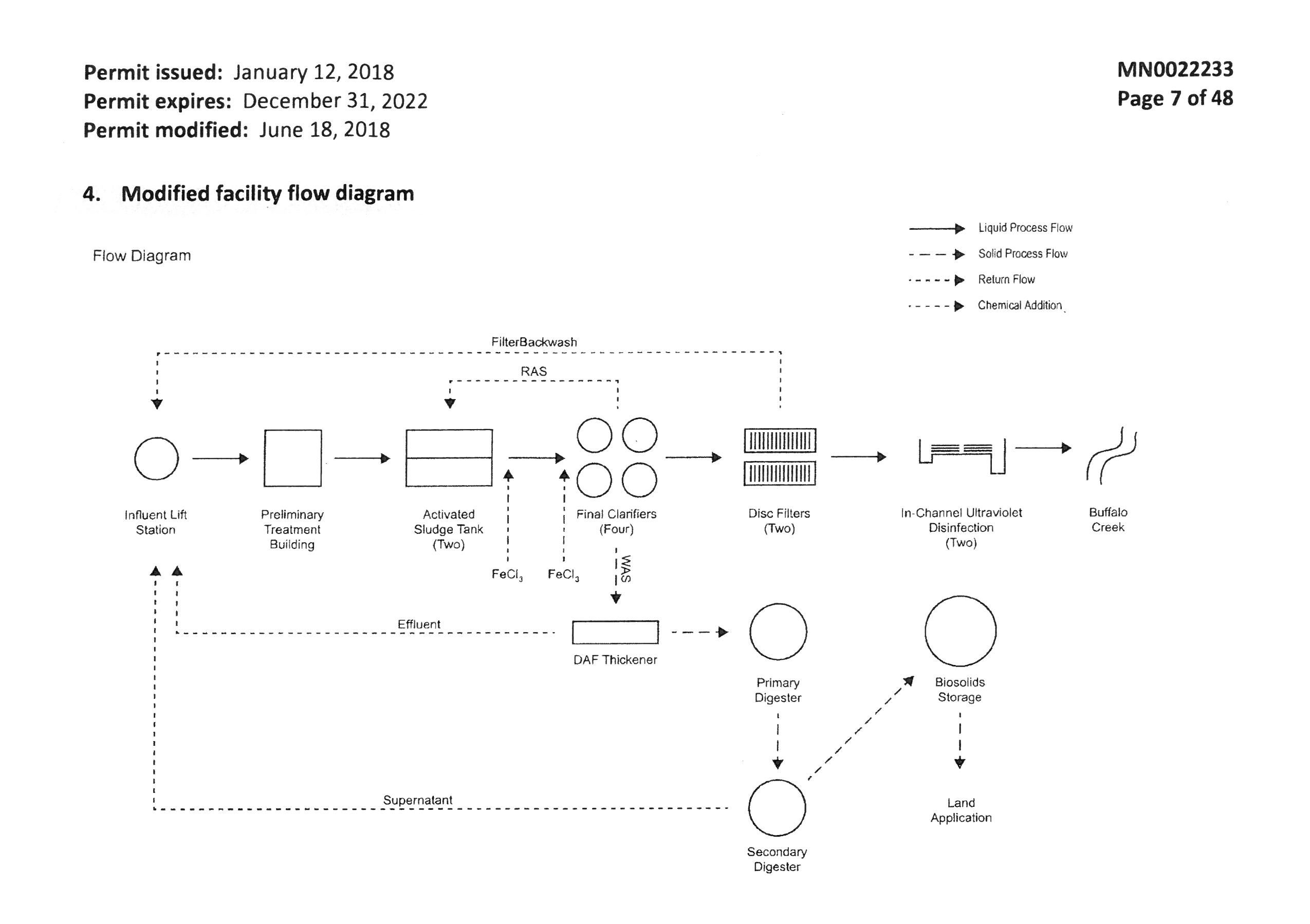
Ron VonBerge
Wastewater Department Supervisor
Phone: (320) 510-0368 (available 24 Hours/7 Days a week)
Email: [email protected]
Mark Lemen
Public Works Director (Water/Wastewater/Storm Water)
Phone: (320) 864-6954
Email: [email protected]
The initial wastewater collection facilities were constructed in 1915. In 1934 an activated sludge treatment plant with a design flow rate of 80,000 gallons per day. Increased growth dictated a new plant to be constructed in 1955 at the site of the existing plant. This plant was designed to treat a flow of 470,000 gallons per day. In 1974 the plant was expanded to a flow of 900,000 gallons per day to meet increased growth and more rigorous state and federal regulations. This plant expansion cost $1,600,000 of which 75% of the project costs were paid with federal grants with another 15% being funded by the State of Minnesota. Facing increased demands, the City undertook another upgrade in 1994 at a cost of $2,500,000, which was funded locally with no federal or state grant dollars being available. This expansion had a daily design flow rate of 1,350,000 gallons per day and a wet weather flow design of 6,000,000 gallons per day.
Today wastewater from the City of Glencoe and City of Plato are treated utilizing the plant that was upgraded in 1994. However, the Glencoe City Council recently approved bids and contracts for a significant upgrade to the wastewater treatment facility with construction planned to being in 2019. The Glencoe Phosphorous Project is an improvements project at the wastewater treatment facility designed to address key concerns surrounding age and condition of the facility as well as compliance with a new effluent total phosphorus limit.
Aging Infrastructure
While the processes at the wastewater plant with the lowest age are over 25 years old, other parts of the facility are more than 40 years old. The existing equipment, mechanical systems, and electrical systems have outlived their useful life and need replacement. Equipment failures in the recent years have impacted the operations of the facility and its ability to remain in compliance with permit requirements.
Regulatory
The new effluent total phosphorus limit imposed on the facility is part of the River Eutrophication standards approved in 2014 by the Minnesota Pollution Control Agency (MPCA) for surface waters in the state of Minnesota. The existing wastewater treatment facility cannot currently meet the new phosphorus limit; therefore the MPCA included a compliance schedule in the facility’s permit to make improvements to comply with the limit. Constructions of the improvements are included in the compliance schedule.
Improvements
The design of improvements at the wastewater treatment facility include new or upgraded facilities for the following processes:
- Influent lift station
- Preliminary treatment building with screening and grit removal
- Additional aeration basin capacity
- Chemical addition for total phosphorus limits
- Primary clarifiers
- Filtration process to meet low cBOD and total phosphorus limits
- Ultraviolet disinfection system
- Dissolved Air Flotation for sludge thickening
- Anaerobic Digesters
- Biosolids storage and loadout
- Mechanical systems including HVAC
- Electrical systems including power, back-up power, SCADA, and instrumentation
- New piping, valves, pumps as needed
- Effluent reuse system
- Site work
The design includes reuse of existing structures including the final clarifiers, digesters, and main control building and demolition of the trickling filters and chlorine contact/backwash basin.

| Size of Pipe | Total Pipe by Mile | Existing Pipe by Feet |
| 4” sanitary sewer | .04 | 200 |
| 6” sanitary sewer | .70 | 3,670 |
| 8” sanitary sewer | 20.26 | 105,508 |
| 10” sanitary sewer | 4.04 | 21,317 |
| 12” sanitary sewer | 7.02 | 36,345 |
| 15” sanitary sewer | 2.42 | 12,800 |
| 18” sanitary sewer | .90 | 4,760 |
| 21” sanitary sewer | 1.24 | 6,408 |
| 24” sanitary sewer | .04 | 200 |
| TOTALS | 36.66 | 191,208 |
